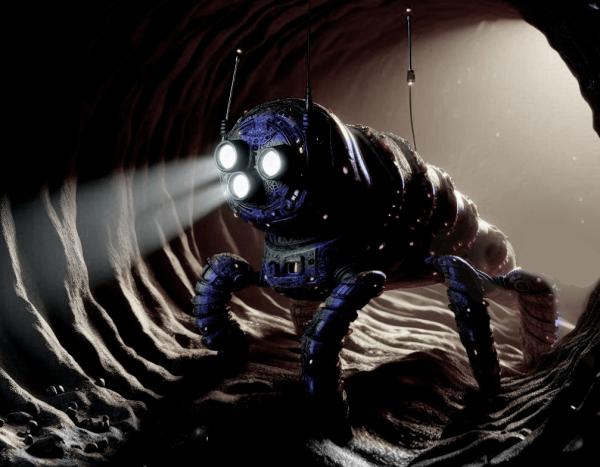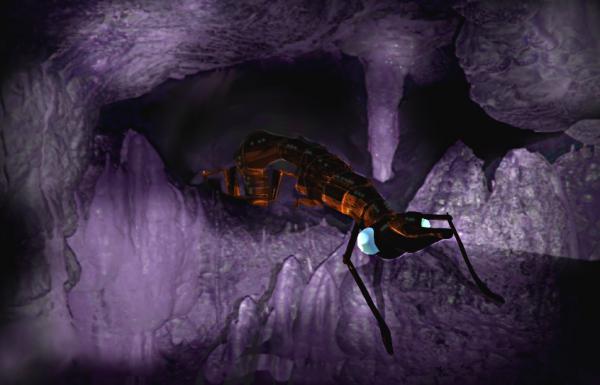BY LETTER
Caving Drone
Remote Cave Exploration Technology | |
 Image from Steve Bowers and Bing Image Creator | |
| An Interplanetary Age cave drone beneath the surface of Mercury | |
The caving drone has been a popular entertainment device since the mid-late First Century AT. They carry lights, multiple cameras and a power source (cable or battery). The cameras feed into a VR representation of the cave to the operator. The most common model is a flying quadcopter such as the ones on Orwell's hotter areas, while a serpentine tele-operated robot is also popular on many planets such as Cenote. Tourist show caves, such as the ones of Entoit on Eden, often to use a humanoid doll-like representation of the user which uses Class 2 or Class 3 geckotech to allow climbing.
Caving drones were originally devised for exploring the last unknown passages of Earth's cave systems. Many caves have passageways which are too narrow for a human to pass through, which lead to extensive systems. The drone could be made small enough to fit through these passageways, and allowed their exploration, especially as progress made possible longer/thinner cables for data transfer and power, or stronger batteries and smaller/more numerous repeaters to send the data. An additional advantage was that the cave drone did not have the oils on its surface which are on human skin and disrupt the growth of speleothems, and also the data link can be monitored to prevent deliberate damage to the cave. Also, caves with no known entrances could be discovered by radar or sonar type technologies and a hole drilled to them to admit a caving drone.
Historically, these drones were first used to explore caves, but they were almost immediately applied to other tasks, such as rescue work in collapsed buildings. By the Second Century AT the caves had been mapped and the preferred tourist method of seeing a cave was in virtuality, although "old fashioned" people who want to "really" see a cave insisted on using the drones right up to the Technocalypse (and on various worlds to the present day). By the Fifth Century AT drones on the scale of a millimeter had been developed, with spider-thread cables or batteries with a lifetime of a few minutes, which could be placed on damp soil to examine microbes in their native habitat. The drones also allow expiation be explorers (and later by tourists) in hostile environments which would not allow their survival unprotected. Later versions are often used as temporary bodies.
 Image from Steve Bowers | |
| An insectile cave drone explores the deep caves of Cenote | |
Related Articles
Appears in Topics
Development Notes
Text by Tom Mazanec
Initially published on 07 October 2015.
Initially published on 07 October 2015.
Additional Information
Video: First Deep Sea Humanoid Robot Drone - located by Tom Mazanec, added January 2023






